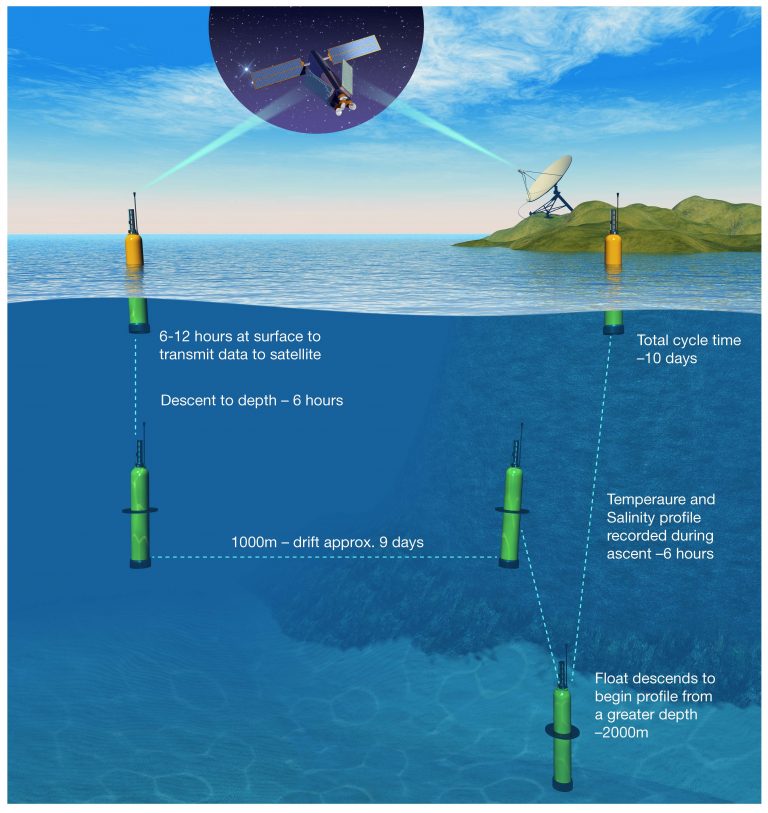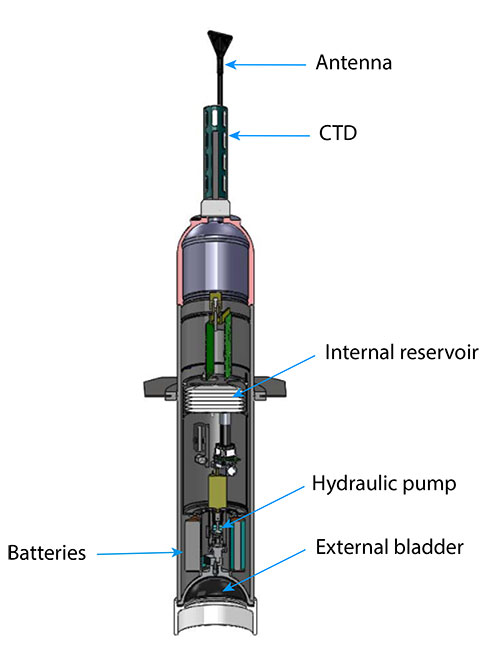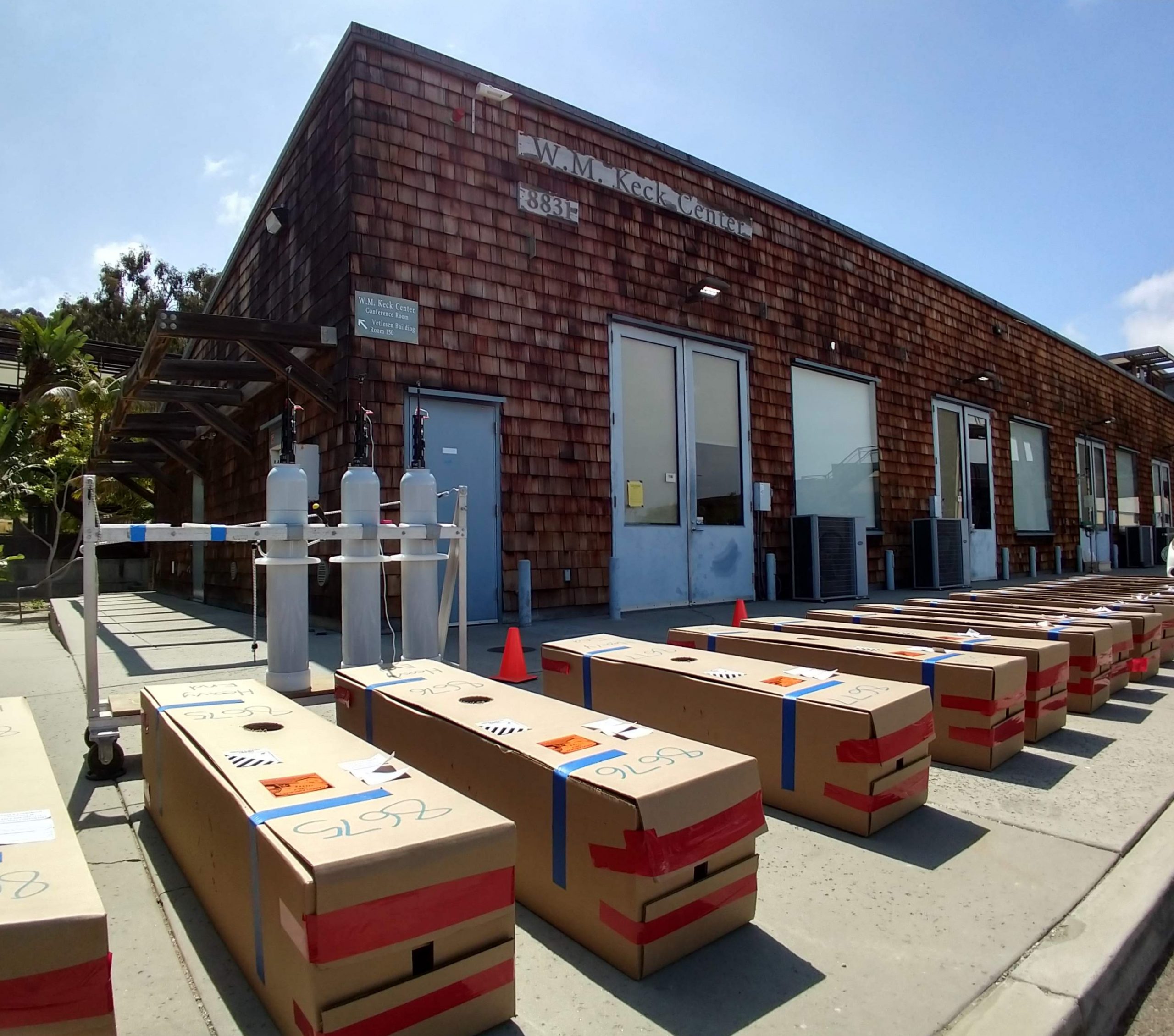SOLO-II
The Argo Program
The Argo program is an international effort that has been operational since the early 2000s with the goal of measuring physical and biogeochemical properties of the seawater in the global oceans. The Argo fleet currently consists of nearly 4000 autonomous floats covering virtually all of the world's oceans and providing about 400 profiles of temperature and salinity per day. More information about the program may be found on the Argo project website.
SOLO-II Design
SOLO-II is the current Argo float model produced by IDG and its design is the result of decades of development, dating back to 1990s with the development of the Autonomous Lagrangian Circulation Explorer (ALACE) float. With a high performance pump attached to an external bladder, these robots change their buoyancy to dive down to 2000 m and then return to the surface profiling the water column. After each cycle, the collected data are transmitted through a satellite link to IDG and then passed to the Argo Data Center.
SOLO-II Production
SOLO-II floats were designed to autonomously profile the water column every 10 days over a period of several years. To maintain the number of operating floats on the Argo array, IDG constantly produces and ships SOLO-II floats to all over the world. Currently there are over 650 SOLO-II floats in the ocean, accounting for over ⅙ of the entire Argo feet.
